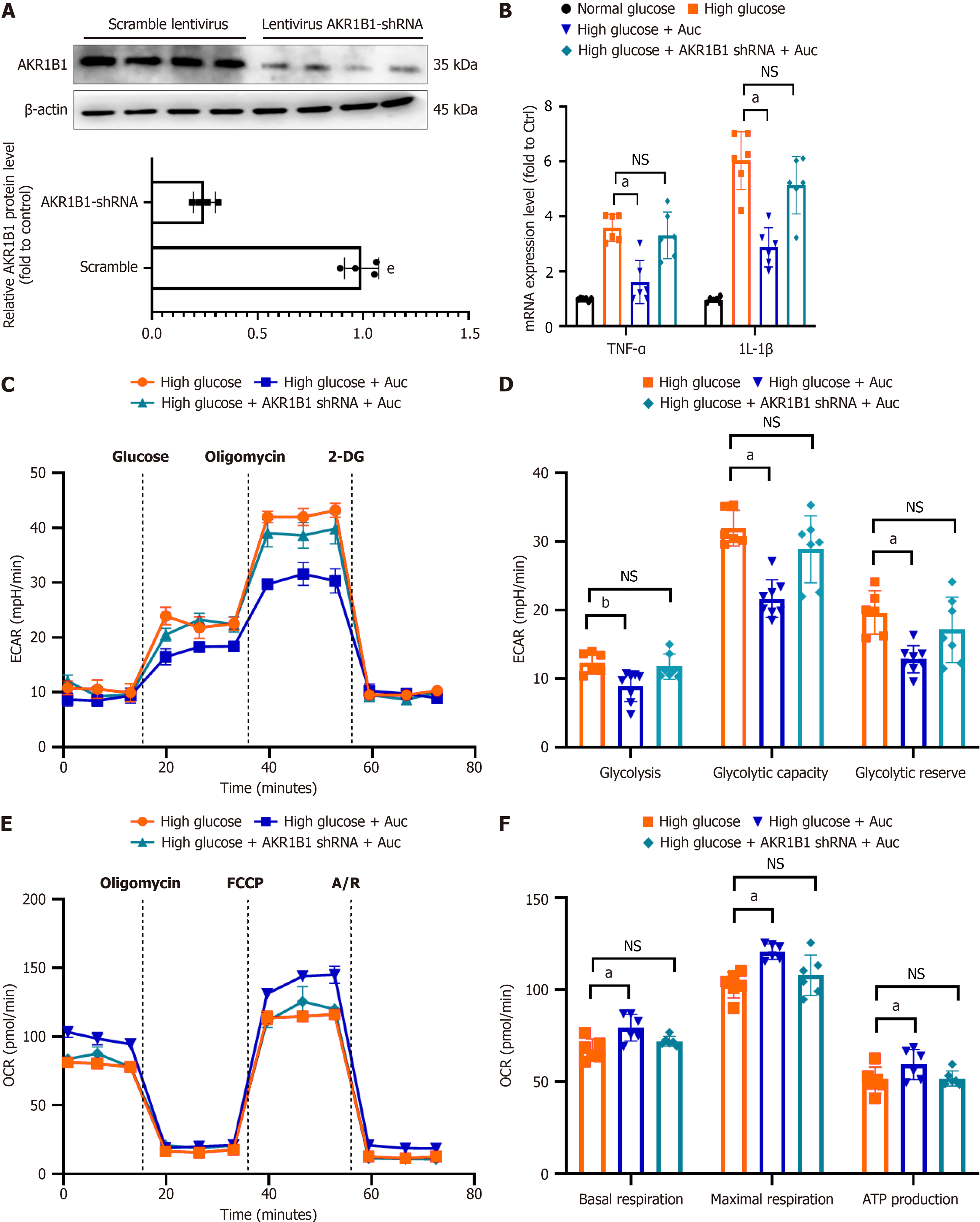Copyright
©The Author(s) 2025.
World J Diabetes. May 15, 2025; 16(5): 103915
Published online May 15, 2025. doi: 10.4239/wjd.v16.i5.103915
Published online May 15, 2025. doi: 10.4239/wjd.v16.i5.103915
Figure 6 Aucubin fails to restore aerobic glycolysis and inflammation in the context of AKR1B1 deficiency.
A: The expression level of AKR1B1 after transfecting AKR1B1 shRNA lentivirus. The quantitative analysis of the relative expression of AKR1B1 below. Data are expressed as mean ± SEM (n = 4); B: The mRNA levels of pro-inflammatory cytokine; C-F: The experimental program of extracellular acidification rate (C and D) and the oxygen consumption rate (E and F) of BV-2 measured by Seahorse XFe96 Extracellular Flux Analyzer. Data are expressed as mean ± SEM (n = 6). aP < 0.01, bP < 0.05, high glucose vs high glucose + aucubin. NS: No significance; Auc: Aucubin; 2-DG: 2-deoxy-d-glucose; ECAR: Extracellular acidification rate; OCR: Oxygen consumption rate.
- Citation: Zheng XZ, Yu HY, Chen YR, Fang JS. Aucubin mitigates the elevation of microglial aerobic glycolysis and inflammation in diabetic neuropathic pain via aldose reductase. World J Diabetes 2025; 16(5): 103915
- URL: https://www.wjgnet.com/1948-9358/full/v16/i5/103915.htm
- DOI: https://dx.doi.org/10.4239/wjd.v16.i5.103915









